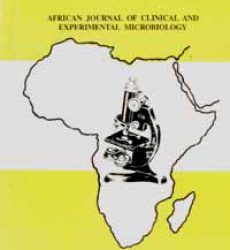1*Al-Laaeiby, A., 2Ali, S., and 3Al-Saadoon, A. H.
1Department of Biology, College of Science, University of Basrah, Iraq
2Department of Nursing Clinical Sciences, College of Nursing, University of Kirkuk, Iraq
3Department of Pathological analyses, College of Science, University of Basrah, Iraq
*Correspondence to: ayat200022@yahoo.com
Abstract:
Candida species are known to cause serious infections in immunocompromised patients but uncommon cases have been reported in immunocompetent individuals regardless of the harmless co-existence of the fungi with the host. Recently, the incidence rate of candidiasis has increased dramatically alongside the emergence of antifungal resistance. Although conventional methods to ensure prompt diagnosis of candidiasis for effective therapy have been established, the scientific world is witnessing progress in the development of more accurate, timely and cost-effective methods that is coinciding with the molecular revolution and advanced DNA analysis. Moreover, the challenges of resistance of Candida to available antifungal agents are being met with the deployment of molecular techniques to investigate the mechanisms of resistance. This review is an attempt to provide up-to-date information on the persistent problems of Candida with highlights on the clinical importance, molecular diagnosis, and resistance to candidate antifungal drugs; azoles and echinocandins.
Keywords: Candida, resistance, molecular diagnosis, azole, echinocandin
Received April 1, 2019; Revised May 13, 2019; Accepted May 30, 2019
Copyright 2019 AJCEM Open Access. This article is licensed and distributed under the terms of the Creative Commons Attrition 4.0 International License (http://creativecommmons.org/licenses/by/4.0), which permits unrestricted use, distribution and reproduction in any medium, provided credit is given to the original author(s) and the source.
Espèce Candida: l’ennemi silencieux
1*Al-Laaeiby, A., 2Ali, S., et 3Al-Saadoon, A. H.
1Département de biologie, Collège des sciences, Université de Basrah, Irak
2Département de sciences cliniques infirmières, Collège des sciences infirmières, Université de Kirkuk, Irak
3Département de Pathological analyses, Collège des sciences, Université de Basrah, Irak *Correspondance à: ayat200022@yahoo.com
Abstrait:
Les espèces de Candida sont connues pour causer des infections graves chez les patients immunodéprimés, mais des cas peu communs ont été rapportés chez des individus immunocompétents, indépendamment de la coexistence inoffensive des champignons avec l’hôte. Récemment, le taux d’incidence de la candidose a considérablement augmenté parallèlement à l’émergence d’une résistance antifongique. Bien que les méthodes conventionnelles permettant d’assurer un diagnostic rapide de la candidose en vue d’un traitement efficace aient été établies, le monde scientifique constate des progrès dans la mise au point de méthodes plus précises, plus rapides et plus rentables qui coïncident avec la révolution moléculaire et l’analyse avancée de l’ADN. De plus, les défis posés par la résistance de Candida aux agents antifongiques disponibles sont résolus par le déploiement de techniques moléculaires pour étudier les mécanismes de résistance. Cette revue tente de fournir des informations à jour sur les problèmes persistants de Candida en soulignant l’importance clinique, le diagnostic moléculaire et la résistance aux antifongiques candidats; les azoles et les echinocandins.
Mots-clés: Candida, résistance, diagnostic moléculaire, azole, echinocandine
Download full journal in PDF below
Candida species the silent enemy

